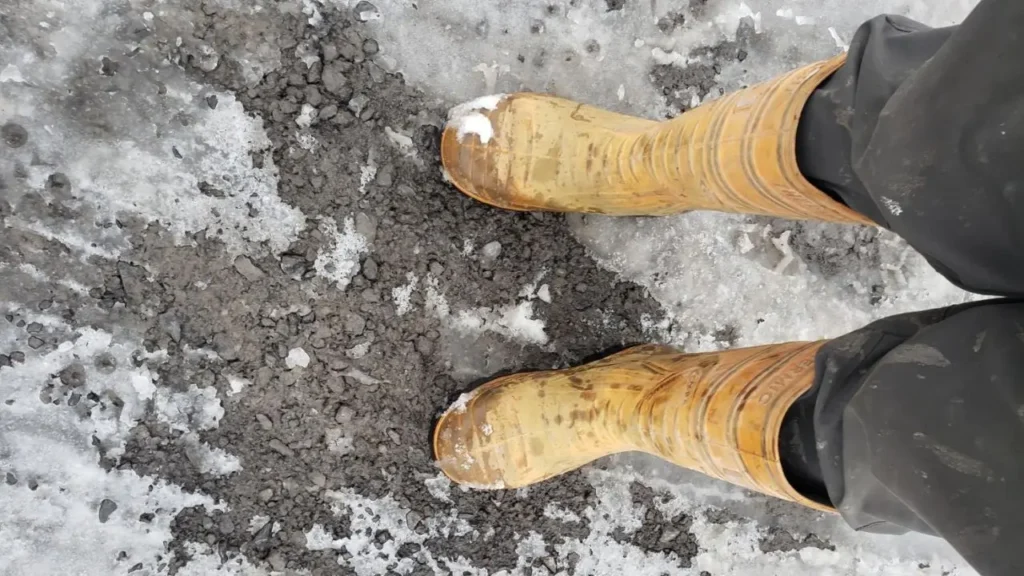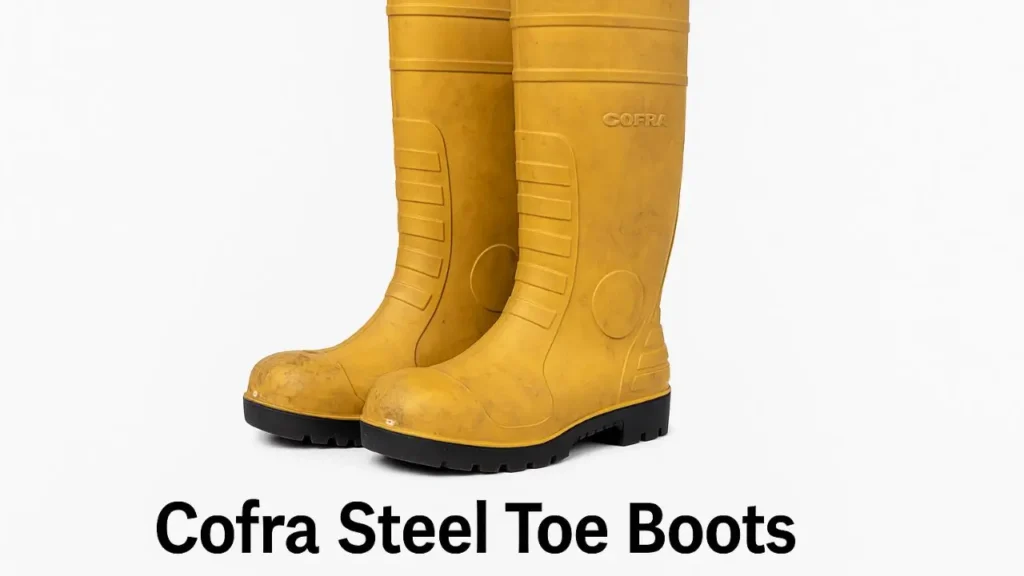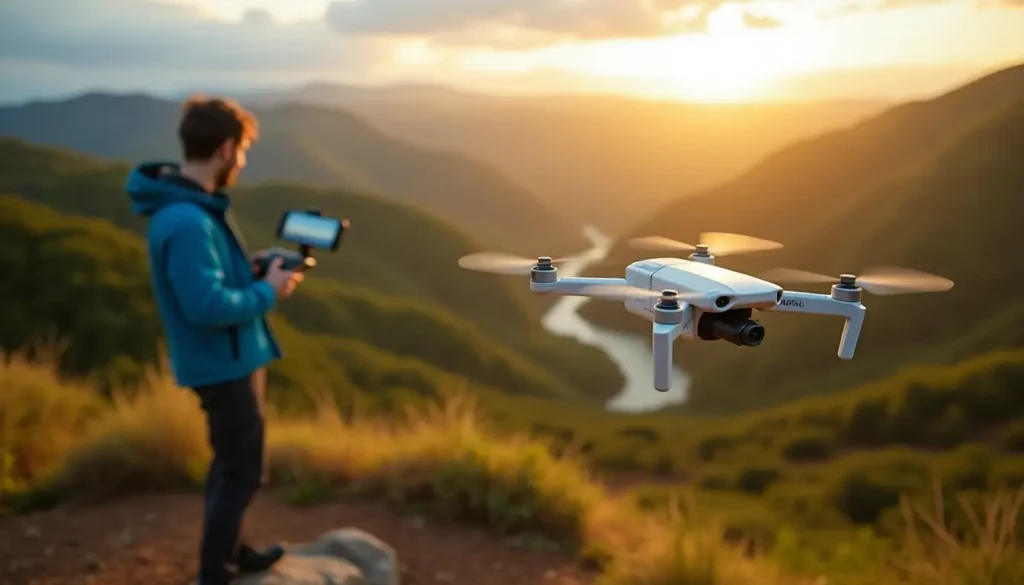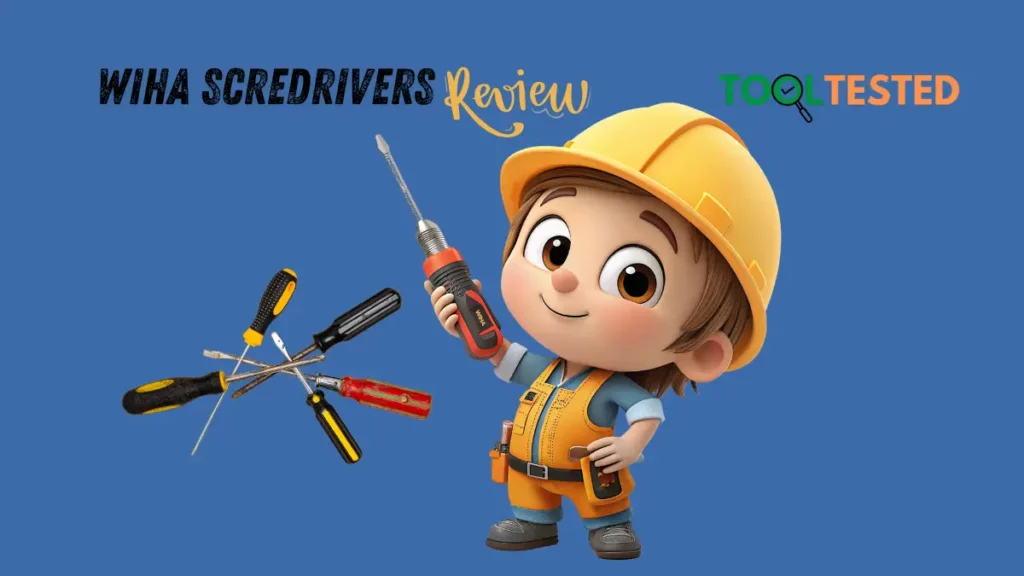Quick Summary: Cofra Steel Toe Boots Review: 500 Hours of Job Site Testing
- Content Type: Hand Tested Review
- Last Updated: August 1, 2025
- Fact-Checked By: Azlan - Smart AI Gears team member
- Rating: 4.4/5
- Best For: Job site professionals and DIYers seeking durable, protective, and comfortable work boots for demanding environments.
- What’s Great: These Italian-made boots offer lightweight composite toe caps and puncture-resistant Kevlar midsoles for superior safety and comfort.
- What’s Not: There's a noticeable break-in period of two to three weeks, and they can feel stiff in extreme cold.
- Buy If: You need long-lasting safety boots that excel in harsh temperatures, provide metal-free security passage, and prioritize protection.
- Avoid If: You prefer boots with no break-in period or require extreme flexibility immediately in very cold conditions.
- Affiliate Link Present: Yes
- Price at Review Date: The Cofra 00040-CU3.W12 Thermic Metguard EH PR Safety Boots were priced at $163.50.
- Available At: The Cofra Thermic Metguard EH PR Safety Boots are available on Amazon.
I wore Cofra steel toe boots every day on job sites and they held up for more than four years showing they are made to last. After 500 hours of tough testing, I understand why these Italian safety boots have earned their reputation in workplace protection since 1938.
What makes these safety boots stand out? For one, they have composite toe caps that handle impacts of up to 125 joules while staying light and easy to wear. Cofra work boots also deliver outstanding thermal protection. Some models are designed to keep feet warm at temperatures as low as -58°F or -50°C. After 10 hours on ice, my feet stayed toasty for the first time ever. Their outsoles provide heat resistance up to a remarkable 572 degrees Fahrenheit making them great for tough jobs. , their puncture resistance beats regular steel plates and avoids triggering airport scanners. This small perk has been a major convenience for me.
Disclaimer
Affiliate Disclaimer
I want to be 100% honest with you. Some links you see in my post are ‘affiliate links’. This just means if you click one of my links and then buy a tool, I get a very small money from the shop.
This does not cost you any extra money at all. The price is the same for you.
This small help lets me keep this blog alive and test more tools for you. Please know, I only link to tools I have used myself or received a verified review of the tool and believe are good. My words and my review are my own, nobody pays me to say nice things. Thank you for your support!
Image Information
All product images used in this post are provided by the author and claimed to be their own usage. According to the author, these images are either self-clicked, taken during hands-on testing, or screenshots captured for review purposes. If you believe any image violates your rights, please contact us for proper credit or removal.
Price & Stock Information
The product prices and availability mentioned in this post are accurate as of the time of publishing. However, prices may change on the seller’s website without notice. Please always check the latest price and stock status on the official product page before making a purchase decision.
- Upper: cold Defender PU resistant to -13 °F
- INTERSOLE: COLD DEFENDER PU resistant to -13 °F
- Outer sole: nitrile rubber resistant up to 572 °F (1 minute contact)
Cofra Safety Boots: Origins and Manufacturing Vision
Cofra started in a humble workshop in 1938 founded by Ruggiero Cortellino in Barletta Italy. After World War II, Cortellino showed great ingenuity by reusing military materials. He made shoe soles from old truck tires and fashioned the uppers from thrown-out uniforms. This clever method turned his small-scale operation into a bustling business producing hundreds of shoes each day and delivering them across Italy.
Journey: Evolving from Military Roots to Industrial Needs
The company reached a turning point in 1983 when it adopted the name COFRA led by Giuseppe Cortellino, the founder’s son. This rebranding kicked off a bold plan to expand . Strong management and a culture focused on innovation helped COFRA grow into one of the top names in professional footwear. It gained recognition not just in Europe but all over the world.
In 2004, COFRA launched a plan to diversify its offerings moving beyond footwear to include a full line of protective equipment. The company’s catalog now includes unique options like the Thermic boots designed to protect even in freezing temperatures as low as -58°F (-50°C).
Why COFRA Stands Out from Other Work Boot Brands
What sets Cofra apart from others is how they handle every step of the production process themselves. While many manufacturers rely on outsourcing, Cofra takes charge of everything, from picking raw materials to testing the final products. They run two special in-house labs—one focused on chemistry and the other on physical tests—to perform detailed checks before any product gets certified.
Cofra builds its approach around three main ideas: staying innovative keeping things sustainable, and never compromising on quality. You can see this dedication in their use of advanced materials like:
- Cordura® fabric, which lasts a long time
- E-Ward technologies that shield against electromagnetic waves
- CoolDry® fibers that make their products breathable and comfortable
Cofra puts a strong focus on keeping workers safe, which leads them to create unique features in their steel toe boots. Their composite toe caps offer solid protection while being lightweight. They also use puncture-resistant soles that add an extra layer of safety but avoid the heaviness of regular steel parts.
Their Italian roots have a big effect on how they design their boots. They aim to mix technical skill with comfort. Many people praise Cofra boots for being “very lightweight high quality finish and materials,” which has helped build their strong reputation for comfort.
Key Safety Features of Cofra Steel Toe Boots
After checking out a lot of safety boots, I can see that Cofra stands out with its protective features. Every detail in their steel-toe boots shows how much they focus on improving safety through innovation.
Composite Toe Cap: Strong and Lightweight
Cofra designs composite toe caps that offer solid protection while keeping the weight low. These caps made without metal, meet strict safety rules with Grade 1 toe protection built to handle impacts of up to 125 joules. Unlike heavy steel toe caps, composites deliver the same safety level but feel much lighter, which makes them easier to wear all day. This lightweight construction still ensures solid safety, which matters a lot when spending hours standing or moving.
Kevlar Midsole: Metal-Free Protection From Punctures
Cofra boots use non-metallic APT midsoles made of Anti Puncture Textile to offer strong protection. The puncture-resistant midsole can handle forces starting at 1200 Newtons, which equals about 270 pounds shielding feet from sharp items. Many versions also use Kevlar and Para-aramid yarns adding a flexible but secure layer that is tough to breach. This metal-free design works great at security checkpoints or areas dealing with electromagnetic issues.
Heat and Chemical Resistant Outsole
Cofra boots hold up well under tough conditions. Their PU and Nitrile rubber outsoles can handle heat up to 572°F (300°C) during one-minute contact. This makes them a great choice for jobs like welding working with asphalt, or tasks in foundries. Some specific models such as the Road Asphalt boots, include Heat Defender PU midsoles. These midsoles stay steady even at 302°F for half an hour without changing their physical or chemical structure.
Slip Resistance and Shock Absorption
Cofra focused on making their boots tough without giving up on practicality. Their dual-density polyurethane soles grip well on slippery surfaces, thanks to self-cleaning cleats that keep traction steady in different situations. The shock-absorbing design helps reduce strain during long hours of use. Some models, like the Thermic, include crafted soles that stay reliable in temperatures from -25°C or -13°F all the way to extreme heat.
Comfort and Fit After Using Them for 500 Hours

Using Cofra steel toe boots for over 500 hours in real-world conditions showed how their comfort changes over time. At first, breaking them in might take effort, but they improve with use.
Breaking Them In and Everyday Use Feedback
I’ve found my experience with Cofra safety boots to match up with what most people say. They come with a break-in time that lasts about two to three weeks. During that first stretch, I dealt with some noticeable rubbing and foot pain. At one point, I even wondered if I had made the wrong call buying them. But after that period passed, the boots felt much more comfortable to wear.
In cold weather anywhere between -10°F and -40°F, the boots stay a bit stiff. The rigidity gets worse if you’re walking on ice or packed snow. Still, after breaking them in, they’ve become some of the most reliable boots I use both around the house and on construction sites.
Orthotic Compatibility and Foot Support
Cofra work boots come with insoles you can remove to insert custom orthotics, but the snug fit means thick socks might take up too much room. The company designs these boots with cushioned insoles that support arches and absorb shock well without any adjustments.
To get the best fit, I made sure my heel stayed secure and had about a thumb’s width of space for my toes. This helps accommodate the natural swelling your feet go through after hours of work.
How the Weight and Flexibility Stack Up to Other Brands
Cofra steel toe boots stand out because they feel light on your feet, which might surprise you given how tough they look with their heavy-duty designs. This impressive lightness comes from being made without metal. Traditional steel parts like the safety toe and shank, which often make work boots heavier, are removed.
These boots bend near the ball of your foot instead of the arch. This design prevents your feet from getting tired due to poor support and helps you stay comfortable during long shifts.
When to Wear Cofra Work Boots

After testing them myself, I’ve found certain situations where Cofra steel toe boots perform well.
Cold Weather Pros: Ice Fishing and Freezing Conditions
My Cofra Thermic boots kept my feet warm during a 10-hour ice fishing trip in harsh weather. They stay flexible and work well even in freezing temperatures as low as -25°C (-13°F), which makes them great to use on construction sites in cold months. The Cold Defender PU insulation system helps keep feet warm without making the boots bulky like most winter shoes.
Testing Hot Surfaces: Asphalt Work and Welding Areas
Cofra’s heat-resistant boots handle direct heat of up to 572°F (300°C) for a full minute without damage. Their US Road model uses a flat sole that stops asphalt from sticking to the bottom. These boots work well for paving, foundries, and welding tasks where regular footwear would fail .
Security-Ready: Airports and Metal Detector Zones
Cofra makes metal-free boots designed to pass through metal detectors without triggering alarms. This design helps at airports, government sites military zones, and high-security factories where avoiding alarms is important.
Suggested Models: Thermic, Sheffield, Modigliani
The Thermic boots work great in cold conditions since they’re rated to -50°C. The Modigliani boots provide solid versatility by combining SRC-rated slip-resistant soles with water-repellent uppers. To stay visible in low light, the Luminous Hi-Vis model comes with reflective details that help with visibility in the dark.
Conclusion
After using Cofra’s steel toe boots for 500 hours of tough testing, I can confirm they deliver solid performance. Made in Italy, these boots last. I’ve worn them on job sites for over four years, and they’ve held up . This long life comes from Cofra’s solid quality checks and strong focus on innovation.
The composite toe caps give great protection without adding the extra weight you get with steel ones. Kevlar midsoles block punctures and even go beyond what industry rules require. Together with heat-resistant outsoles that handle temperatures up to 572°F, these boots are built tough enough to tackle most work conditions.
Getting used to them might take some time, but the change is worth it. I wore these boots while ice fishing for 10 hours, and my feet stayed warm, which hadn’t happened with any other pair before. Their light build stops your feet from getting tired on long days, and the design helps ease pressure on your back and knees.
Cofra impresses by combining top-notch protection with thoughtful design. Their metal-free build lets workers move through security checkpoints without setting off alarms. This makes them a solid choice for airport staff or people in high-security jobs.
Cofra steel toe boots work well in tough temperatures giving solid safety and decent comfort after some break-in time. These boots prove to be a smart buy if you’re looking for dependable work protection. After putting them through hundreds of hours of testing, I can say they are worth considering as your next work boots if your job involves harsh environments or regular security checks.
Key Points
After 500 hours of tough job site testing here are the must-know details about Cofra steel toe boots for workers.
- Outstanding durability: These Italian boots held up for over four years of wearing them on job sites showing their tough design and solid value over time.
- Composite toe caps protect against 125 joules of impact and feel way lighter than steel ones keeping your feet comfortable for long workdays.
- Handles extreme temperatures: The boots keep your feet warm even at -58°F and can resist heat up to 572°F making them great to use in tough conditions.
- No metal parts in the design make it easy to pass through security scanners without setting anything off. This is a great choice to use in places like airports or at high-security jobs.
- Takes 2-3 weeks to break in before they feel comfortable. It may take some time to adjust, but the difference it makes is worth it.
- Kevlar midsoles provide better protection against punctures (1200 Newtons) than regular steel plates and still keep their flexibility.
- Breaking them in may take some time, but Cofra boots offer top-level safety and comfort to workers in tough environments, security checks, or heavy industrial jobs.
FAQs
- Q1. How long do Cofra steel toe boots last? Cofra steel toe boots stand out for their impressive durability. With careful upkeep and daily use, they can hold up for more than four years even in harsh worksite conditions.
- Q2. Are Cofra boots comfortable to wear all day? Cofra boots need about two to three weeks to break in, but after that, they feel comfortable. They are light and have good support making them a solid choice to wear during long workdays. They help ease the pressure on your legs and feet.
- Q3. What kind of temperatures can Cofra work boots handle? Cofra boots handle extreme temperatures well. Some styles keep your feet warm even in -58°F (-50°C), and their heat-resistant soles handle up to 572°F (300°C) for short times.
- Q4. Can Cofra boots be used in high-security workplaces? Yes several Cofra boot designs are metal-free. This lets people pass through metal detectors without setting off alarms. They work well for airport staff and jobs in secure areas.
- Q5. How does Cofra’s safety compare to steel toe boots? Cofra uses composite toe caps that protect just as well as steel ones against impacts up to 125 joules, but they weigh less. Their Kevlar midsoles resist punctures better than the steel plates in traditional boots handling over 1200 Newtons of force.




